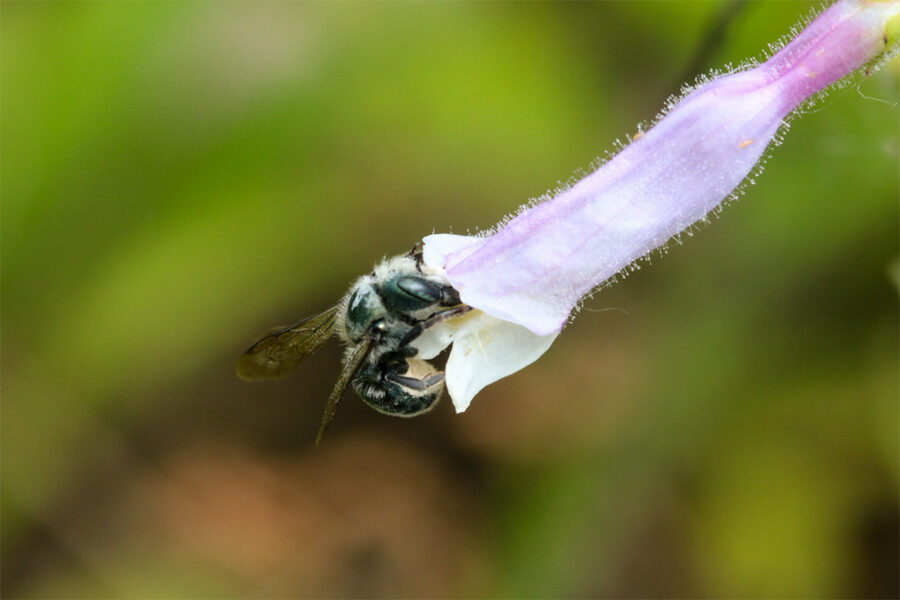A key bee at Chesapeake orchards

If you find yourself apple picking this fall (and we that hope that you do) you may want to thank the mason bee.
Between September and October, orchards in Virginia, Maryland and Pennsylvania burst with wide varieties of local apples. In Pennsylvania, the Historic South Mountain Fruit Belt in Adams County is the sixth largest producer of apples in the nation. Though these farms have typically used honeybees to pollinate their fruit-trees, a growing number of small to mid-size orchards are employing the native mason bee to help get the job done.
While honeybees are an important agricultural resource nationwide, research has shown that mason bees are a far better pollinator of local fruit. According to Penn State University Extension, six mason bees can pollinate an entire tree, where as it would take 360 honeybees to do the same job. Part of the reason that mason bees are such good fruit-tree pollinators is that they emerge in early spring before many others. From that point on, their life cycle coincides with the blossoming of various fruit trees, and they are generally only active for a few weeks in March and April when fruit blooms. With honeybee numbers in decline, mason bees have gotten even more recognition as an alternative fruit-tree pollinator for the Chesapeake region.
The two species of mason bees best suited for apple orchard pollination are the blue orchard bee (Osmia lignaria) and the Japanese orchard bee (Osmia cornifrons), which was brought to the United States in the 1990s to help grow fruit. Though a non-native, the Japanese orchard bee is now well-established in the wild and is not considered to be invasive. Together, these species are earning attention among farmers and gardeners alike, and are some the few bee species to be managed at farms.
Of course, apples aren’t all the mason bee is good for, and there are many more species than the blue orchard and Japanese orchard. There are around 20 species of springtime mason bees in the Mid-Atlantic, and there are 140 species of Osmia (the mason bee genus) in North America. All of them are known for visiting fruit trees, such as apples, plums, pears, almonds, peaches and cherries, as well various flowers.
As such a valuable pollinator, mason bees are being closely observed by Chesapeake Bay Program partners. A program at Penn State University Extension trains gardeners to manage mason bees, while the U.S. Department of Agriculture has released a free guide that compares the productivity of mason bees to honeybees. At the University of Virginia, a team is studying the recent decline in blue orchard bees, specifically the impact that two species of Japanese mason bee are having on native populations. Research continues as the team collects more information about different species and how they co-exist.
It goes without saying that the mason bee is an important part of the Chesapeake Bay watershed. If you want to learn more about this local fruit fanatic, including where they live, how they protect themselves from vicious predators and why they’re called “mason” bees in the first place, visit our Field Guide.

Comments
There are no comments.
Thank you!
Your comment has been received. Before it can be published, the comment will be reviewed by our team to ensure it adheres with our rules of engagement.
Back to recent stories